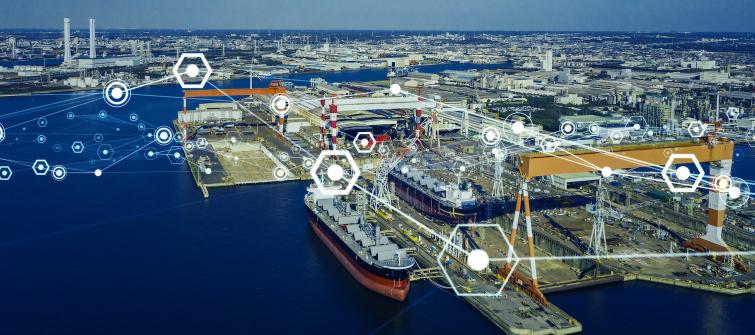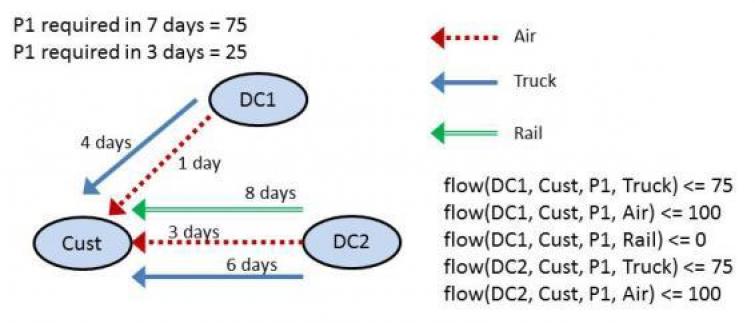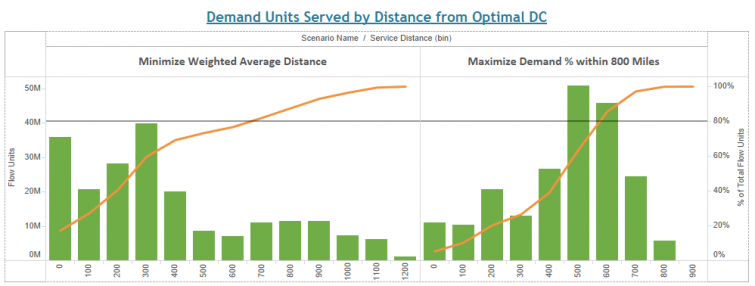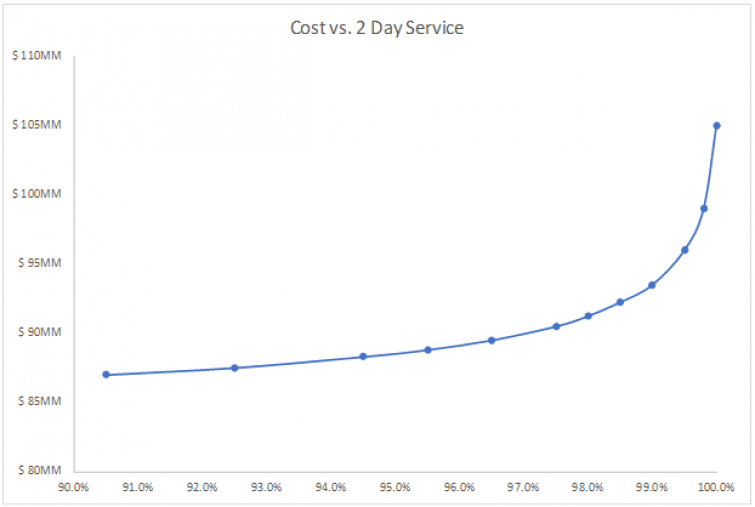Modeling Service in Network Optimization

With so much effort focused on cost minimization, modeling service can often be relegated to the back burner. However, the rise of eCommerce and our seemingly endless desire for ‘just in time’ consumption has ratcheted the importance of service across retail with ripple effects in other industries, as well.
Whether or not service is considered a part of network design can have implications on facility locations, mode mix, and inventory management optimization, from an operational perspective, which may translate to revenue, operating expenses, capital expenditures, and working capital from a financial standpoint. If you aren’t currently incorporating service into your models, now may be the time.
Defining Service in Network Optimization
For a model to properly answer business questions about service, it is important to first define service. This can be distilled into two questions:
- What is the right measurement for service?
- Is service an objective or a constraint?
In network optimization, there are two basic measurements for service — distance and time. While distance is commonly used as a proxy for service, time should supersede distance, especially if there are multiple transport modes which serve the same origin-destination pairs with different transit times, for instance LTL versus FTL or Parcel Ground versus Parcel Next Day. Of course, if you’re using transit time, you’ll want to ensure your model data is accurate. Day-definite transport times are easy to blanket populate, but you’ll want more specific transit for other modes and service levels.
The decision to model service as an objective or as a constraint is key to eliciting the desired answers to your business questions. It is important to understand the motivation for the analysis and to reflect this in the model. For instance, are the reasons for modeling service ‘external’ (e.g. driven by customer requirements or competitive pressure), or is the motivation more intrinsic and exploratory (e.g. understand the cost of improving service)? In the former case, service can be viewed as a ‘requirement’ or constraint; in the latter, service is an objective. Be wise, as the model results may differ depending on your approach; however, do not fear, as multiple approaches can easily be tested against the same model.
Service as a Constraint
There are several key business questions you can answer when representing service as a constraint.
- Facility count and sourcing assignments (“Do I need to add a site or change my customer sourcing assignments to satisfy service requirements?”)
- Mode mix / mode substitution (“What is my mix of Ground vs. Next Day parcel if I change my service requirement?”)
- Both of the above simultaneously (“Is it more favorable to incur the cost of an additional facility vs. the cost of expedited freight?” The answer may even differ by product!)
In essence, when a service level is used as a constraint, it forces the model to respond with solutions which satisfy that service level (e.g. expedited transportation modes at a premium cost or the startup and operation of a more proximal facility). Further insight can be gained by softening constraints on the service level (e.g. only 80% of demand satisfied within 2 days) to understand which customers are geographic exceptions or softening the demand requirement (allowing for unsatisfied demand where the service constraint cannot be achieved) to understand the impact on revenue.

Service as an Objective
In the absence of explicit customer requirements or a competitive benchmark, setting the appropriate service objective can be challenging. What is the cost of improving service and when is this cost ‘too steep?’

In such cases, the visualization of service against cost is a tremendous tool for decision-making. Rather than presenting a single solution, you can illuminate a tradeoff curve to guide stakeholder decision-making toward a result they are comfortable owning.
In reviewing the chart below, you can observe the relationship between total cost and total demand percentage satisfied within 2 days. It clearly indicates a non-linear relationship. Combining this kind of analytical insight with a company's overall business strategy is critical in making a design decision.

Answering your business’s explicit or implicit questions about service can be approached with the same intentionality and rigor as more traditional cost and profit objectives. Moreover, decisions on service can be embedded into otherwise cost-focused models to identify more robust ‘real world’ solutions that impact the top and bottom line alike. The modeling part is easy; challenging your organization on their definition of service and underlying motivations is key to discover meaningful insights.